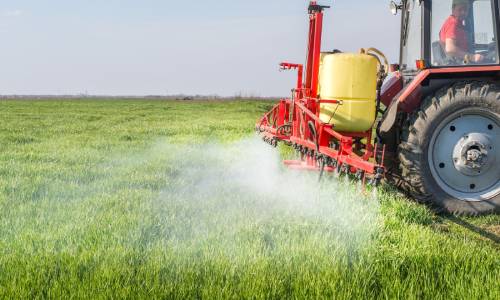Agriculture Spray Adjuvants formulation
Agricultural Adjuvants
Adjuvants are materials added to crop protection products or agrochemicals to enhance the
efficacy of active ingredients and improve the overall performance of the product.
In the agricultural industry, crop protection chemicals are widely used to prevent crops from getting damaged and ensuring better yields. Insecticides, herbicides, and fungicides are used to control threats to the crop in a variety of ways. As the global food demand increases, there is also a need for more effective crop protection products. While research is being done to make these chemicals get more effective, there is also another solution.
Agricultural adjuvants are additives that can be used together with herbicides, insecticides, and fungicides to make them more effective. Adjuvants cannot be used on their own but they significantly enhance the activity of other crop protection products. These can be a part of the formulation itself (built-in adjuvants) or be a separate product that can be mixed in with the crop protection chemical before it is applied to the crops (tank mix-adjuvants).
In the agricultural industry, crop protection chemicals are widely used to prevent crops from getting damaged and ensuring better yields. Insecticides, herbicides, and fungicides are used to control threats to the crop in a variety of ways. As the global food demand increases, there is also a need for more effective crop protection products. While research is being done to make these chemicals get more effective, there is also another solution.
Agricultural adjuvants are additives that can be used together with herbicides, insecticides, and fungicides to make them more effective. Adjuvants cannot be used on their own but they significantly enhance the activity of other crop protection products. These can be a part of the formulation itself (built-in adjuvants) or be a separate product that can be mixed in with the crop protection chemical before it is applied to the crops (tank mix-adjuvants).
Adjuvants can enhance product performance by
- Providing more efficient delivery of active ingredients
- Reducing the level of active ingredient required
- Extending the spectrum of effectiveness
- Replacing high-value or high-toxicity active ingredients with lower value surfactants
This leads to
- Better performance and therefore increased yields
- Less chemical environmental pressures
- Reduced costs
- Improved food safety due to lower residue levels
Agricultural adjuvants can broadly be classified into three categories. These are:Surfactants
- Surfactants are activator agents that enhance performance by increasing surface contact, reducing runoff, and increasing leaf penetration. These can be spreaders, stickers, emulsifiers, or wetting agents. Surfactants are further classified into three categories: Nonionic surfactants, Anionic surfactants and Cationic surfactants, with the first two used for crops. Cationic surfactants should never be used with crops, especially as surfactants for herbicides as they are generally used in cleaning agents such as soap and not meant to be used with plants.
- Non-ionic surfactants reduce the surface tension of the water molecule so droplets can cover a greater surface area of the leaf. Also called spreading agents or wetting agents, they are best used under normal growing conditions. Anionic surfactants, on the other hand, work with the water to enhance foaming and spreading.
- Oil-based adjuvants are used to slow the drying of crop protection products so the absorption can increase, making them more effective. These agricultural adjuvants can also improve the penetration into the leaves. Oil-based adjuvants can also be classified into three categories: crop oils, crop oil concentrates, and vegetable oil concentrates. Crop oils generally have a petroleum oil base which is mixed with a small quantity of non-ionic surfactants. Crop oil concentrates and vegetable oil concentrates are concentrated mixtures of oils and non-ionic surfactants that are meant to be used in very small quantities.
- These adjuvants are used to modify the physical characteristics of the spray solution in some form. Spray adjuvants can be buffering agents which lower the pH of the spray solution to stabilize the crop protection product or drift control agents which increase the droplet size and minimize drift.
- Adjuvants are most commonly used with herbicides but their use with pesticides and insecticides is increasing as well. As with any other agrichemical, it is important to use adjuvants as specified so they can have the intended effect. With adjuvants, the environmental conditions can also be a factor, so it is important to consult the usage guidelines before application. KIL provides adjuvants in select markets and we are growing our range so we can bring more ways to enhance the effectiveness of crop protection products.
Adjuvants are materials added to crop protection products or agrochemicals to enhance the efficacy of active ingredients and improve the overall performance of the
product.
These additives modify the properties of the spray solution, which improves the ability of the active ingredient to target, penetrate or protect the target organism. Adjuvants
can be incorporated into a formulation (built-in / in-can adjuvant) or can be added separately into the spray tank alongside other agrochemical products (tank mix adjuvant).

